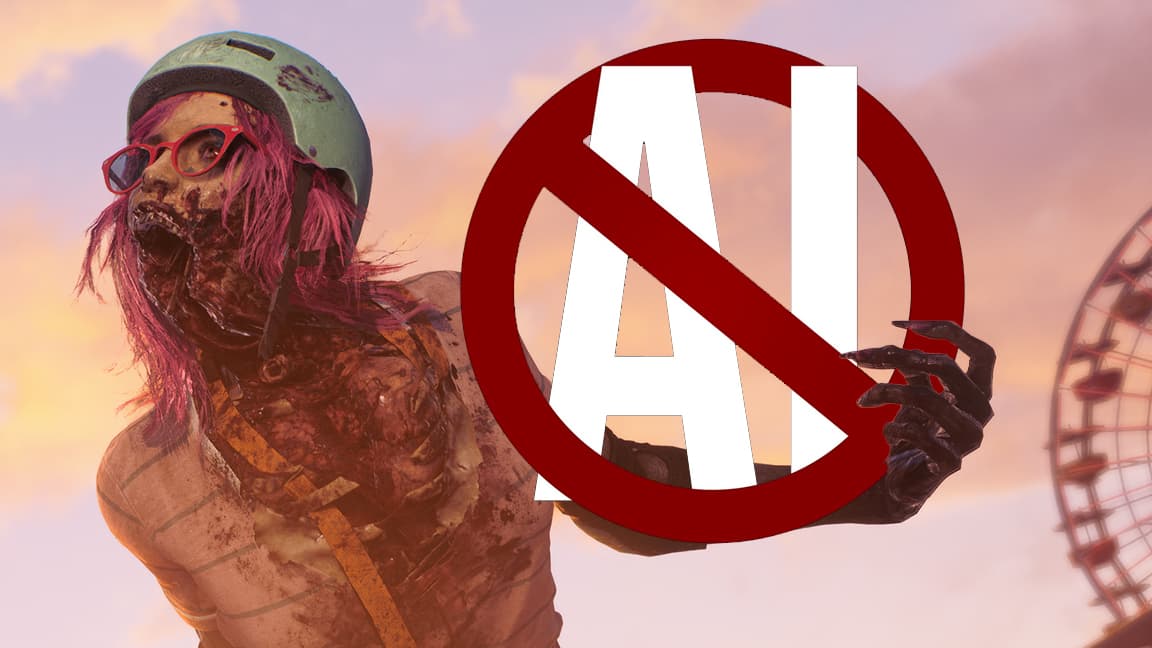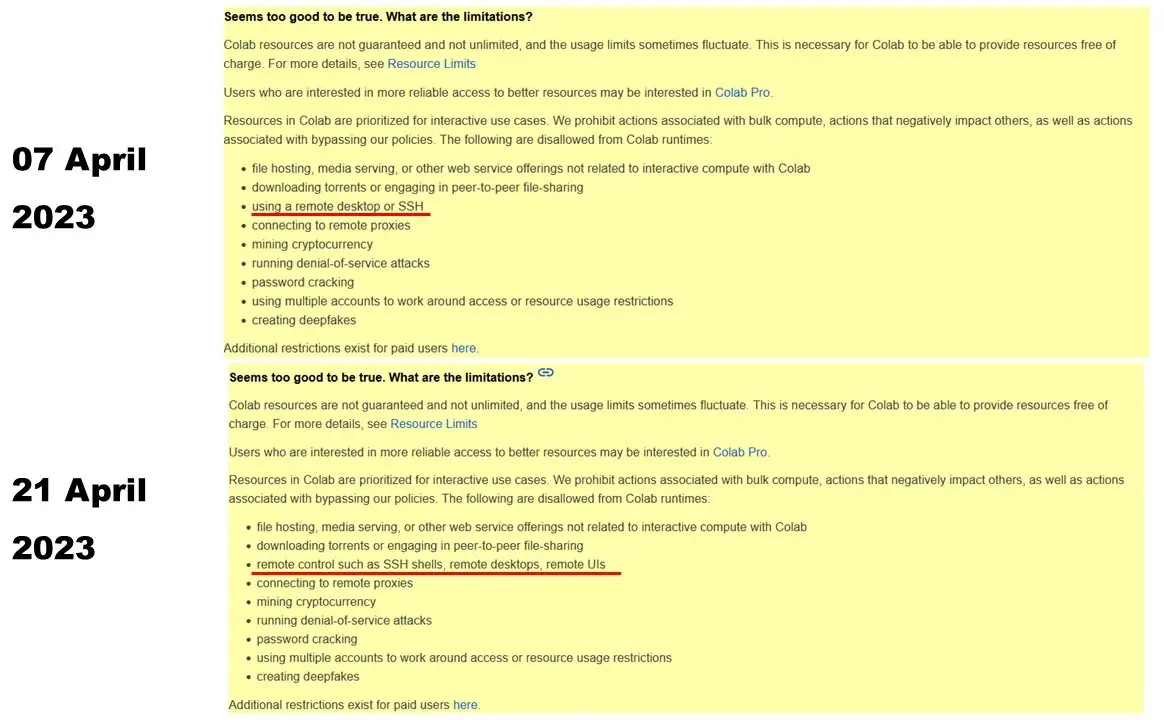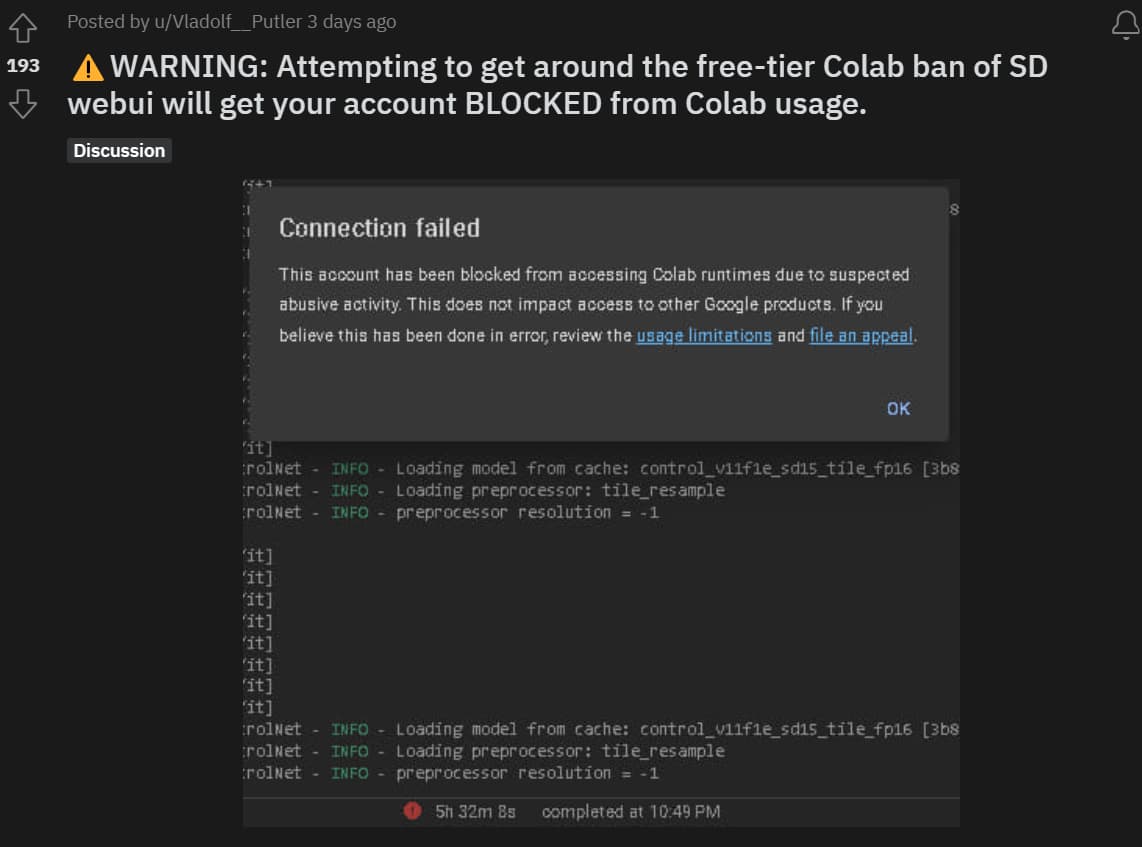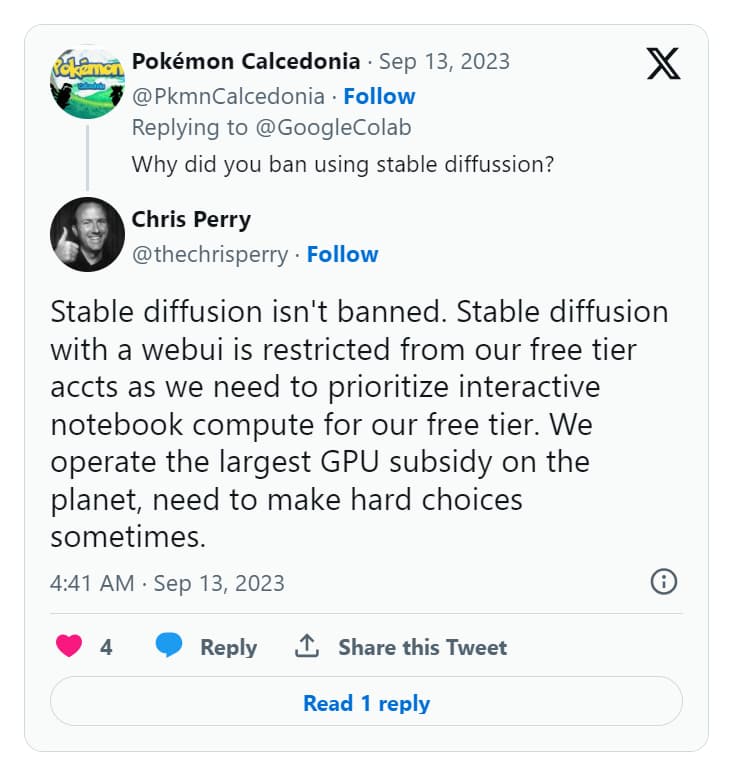The AI visual artists community has been talking a lot about the rules Google has for using Stable Diffusion on their cloud platform Google Colab. Some users are saying that Google is banning them from using Stable Diffusion on their cloud platform.

This is a problem because Google Colab has been a really useful resource for individuals and small businesses who need to run programs that require a lot of processing power.
The person in charge of Google Colab, Chris Perry, went on social media to explain that Google is not actually banning Stable Diffusion. Instead, they are limiting the use of Gradio, which is a user interface for Stable Diffusion that many people like to use. The restriction only applies to people who are using Google Colab for free.
According to Perry, the person in charge of Google Colab, the Gradio interface that many people use for generative UI models has become very popular and is using up a lot of Google’s resources.
Perry explained that they need to prioritize the interactive notebook feature for the free users because they provide a large subsidy for GPU usage, but they also have to make difficult choices sometimes.
This decision aligns with a change Google made to its terms of service earlier this year, which said that users are not allowed to run remote user interfaces and desktops.

There have been reports of previous bans, it seems like Google has started enforcing it more strictly recently, which has caused a lot of users to speak out about it. It seems like the AI community’s excitement was even too much for Google to handle.
Perry mentioned in a tweet that the usage of the Stable Diffusion web user interface has become very high, and it’s difficult for their team to support that level of usage with their budget. The CEO of Stability AI also supported Google’s decision, saying that it’s important to manage resources effectively.
Despite the restrictions imposed by Google on AI art creation, users have several alternatives available to them. They can choose to subscribe to the paid tier of Google Colab or use free interfaces like Mage Space, Sea Art, or Leonard AI. They can also rent a cloud instance with a powerful GPU from platforms like Vast.AI or Runpod, or try the decentralized GPU service Stable Hord.
For users who have a GPU with at least 4GB of VRAM, they can run Stable Diffusion at home using local solutions or specialized apps for Macs. These options ensure that users can continue their art projects without major disruptions.
Google’s recent announcement of upgrades to its search engine, incorporating new generative AI capabilities, is a response to the growing demand for AI-generated content. This demonstrates the company’s commitment to advancing AI technology.
As the situation evolves, it becomes clear that the tech giant is trying to balance innovation with sustainable resource management. The implications of these actions are yet to be fully understood, but they highlight the importance of adopting sustainable practices in the field of artificial intelligence.
It appears that the rapid growth of AI art creation is challenging its own limits. While paid users still have access, Google is encouraging AI artists to contribute their fair share by paying for the resources they use.
Related Stories:


